Document Matching
Introduction
Document matching is the mechanism by which a document’s data is matched to one or more supporting documents.
On the Purchasing side, matching is used to reconcile:
What has been ordered (Purchase Order).
What has been received (GRN).
What has been invoiced (Purchase Invoices).
On the Sales side, matching is used to reconcile:
What has been ordered (Sales Order).
What has been invoiced (Sales Invoices).
Some scenarios of where matching is used:
Goods have been received, create a GRN and match to one or more Purchase Orders.
Purchase Invoices received, create a Purchase Invoice and match to one or more Purchase Orders.
How to configuration Document Matching
Document Matching Parameters
When setting up Document types in Iplicit there are options to specify the matching parameters.
Matching and allocations - in the Others tab in Document types.

Match by has three modes of operation:
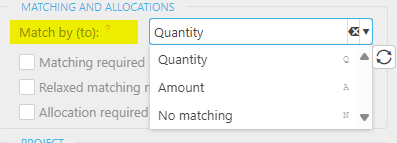
Match by Amount - uses data related to currency amount to perform the matching (e.g. Unit Price, Totals etc) and is best suited to the buying and selling of services.
Match by Quantity - uses data related to quantities to perform the matching (e.g. Line item quantities) and is best suited to the buying and selling of physical goods.
No matching
Matching required: Enforce matching on documents (Different to allocations).
Note
An allowed overmatching tolerance on specific document matching can be set so that users can process over matching between document within a tolerance level.
Tolerance levels can be set in Document matching
Relaxed matching rules – uses a less strict matching algorithm.
What are Document Matching Rules
Document Matching Rules
Any document can be configured to match to any other document within iplicit. These rules are specified in the Matching tab in the document definition.
Converts to and Converted from documents in Matching tab in Document types.

Converts to determines what documents can be converted to, as long as it's allowed in the rules.
Converted from determines what documents can be converted into the documented being created.
Rules in reverse - you can see the reverse rules between documents. e.g. you can see that the reverse rule allowing a Requisition (Amount) to convert to a Purchase Order (Amount) -
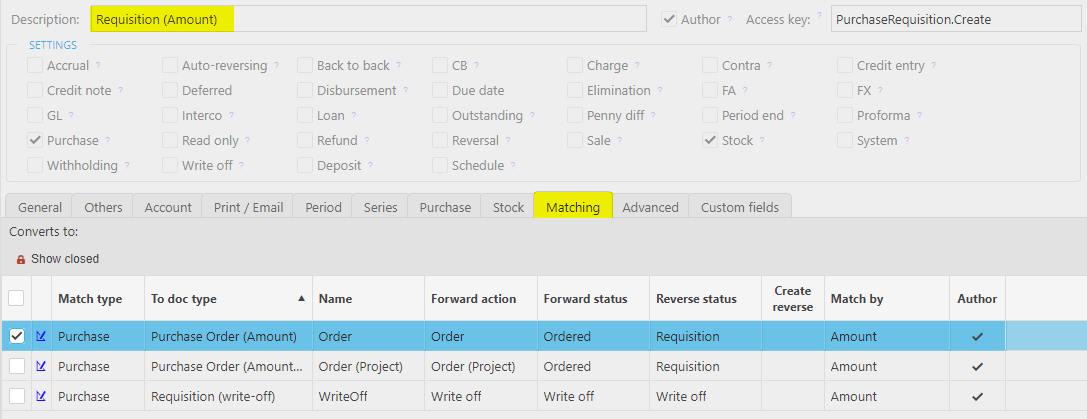
Then on Purchase Order (Amount) you can see Requisition (Amount) in converted from.
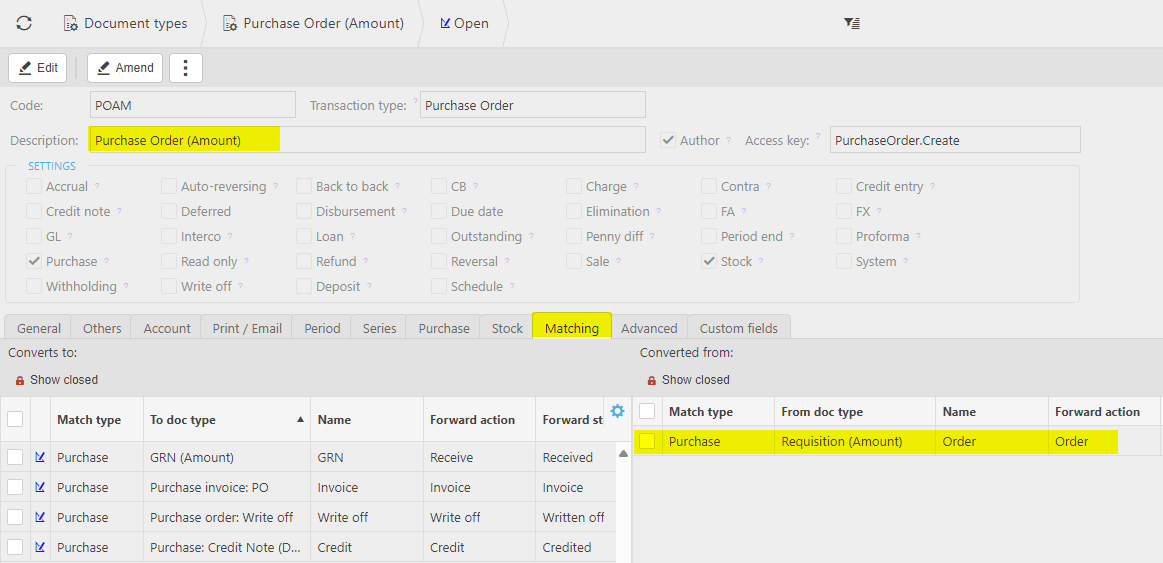
Certain documents will already be added depending on the document e.g.
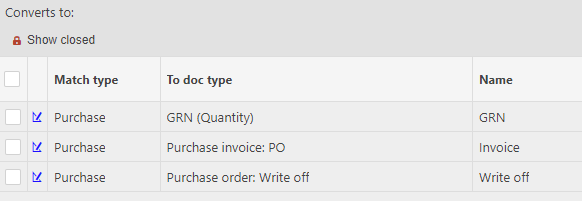
but individual companies have the option to add/delete documents to suit their requirements.
How to Match Documents
Matching Documents
Note
The following User Guide uses Purchase Invoices and Purchase Orders as examples.
The same principle applies to Sales Invoices and Sales Orders
When matching, you DON'T have to match the full document - a user can match just one line if required.
For a Purchase Order based on quantity, e.g. for 25 Widgets at £10 each -

From this Purchase Order you can create a GRN by selecting the Receive or a Purchase Invoice by selecting the Invoice button -
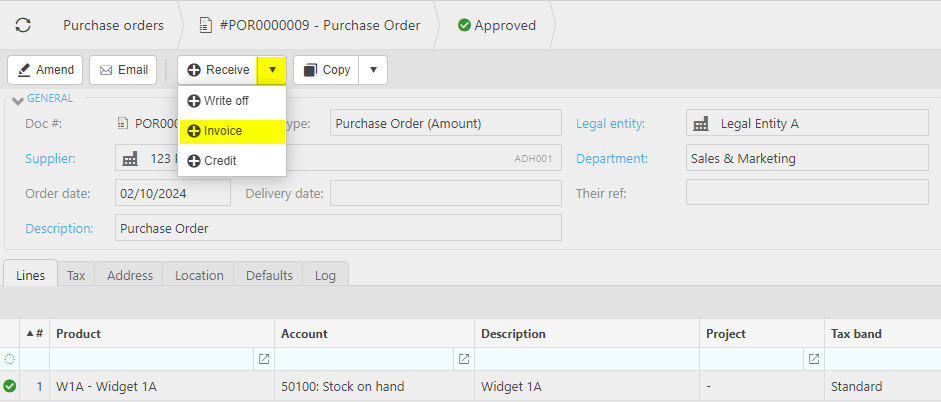
Once an Invoice is created, then a match is created.
If the total quantity on the Invoice is equal to that on the Order, then the Order number will show on the product line and no other matching will be available (blank line).
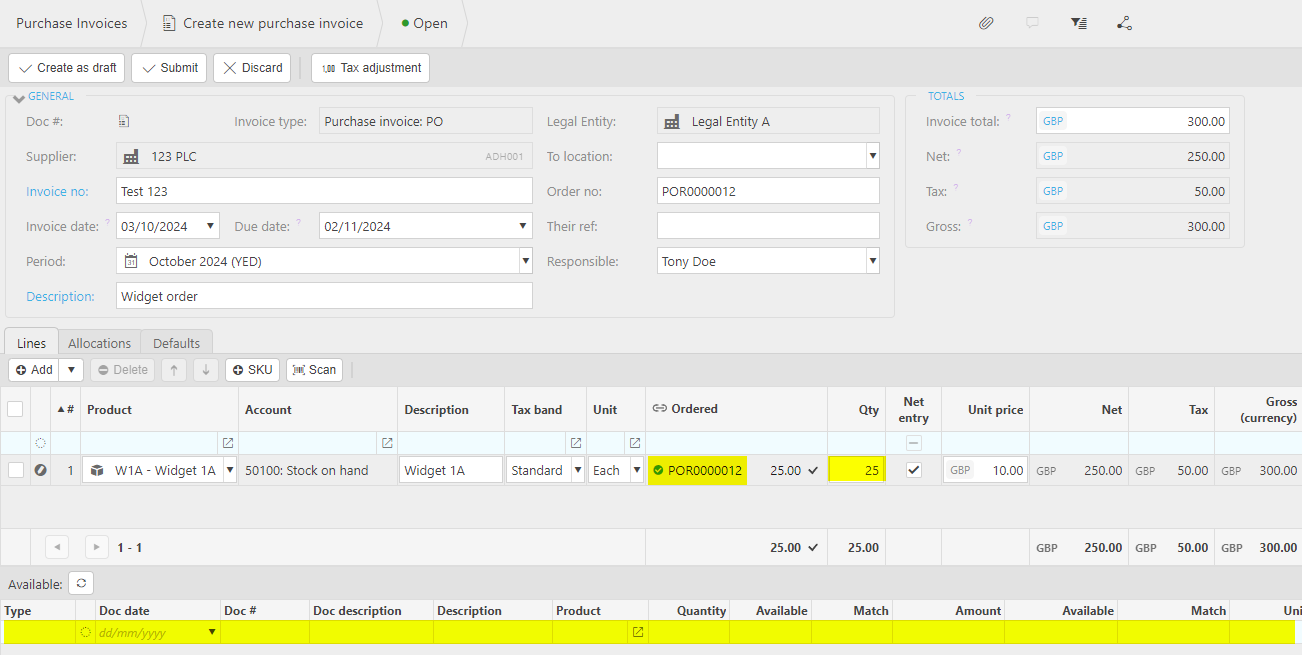
If you only wish to raise an Invoice for part of the Order by manually changing the quantity, then the Order number will show on the product line with the quantity entered and any other remaining quantity will show below on the Available line.
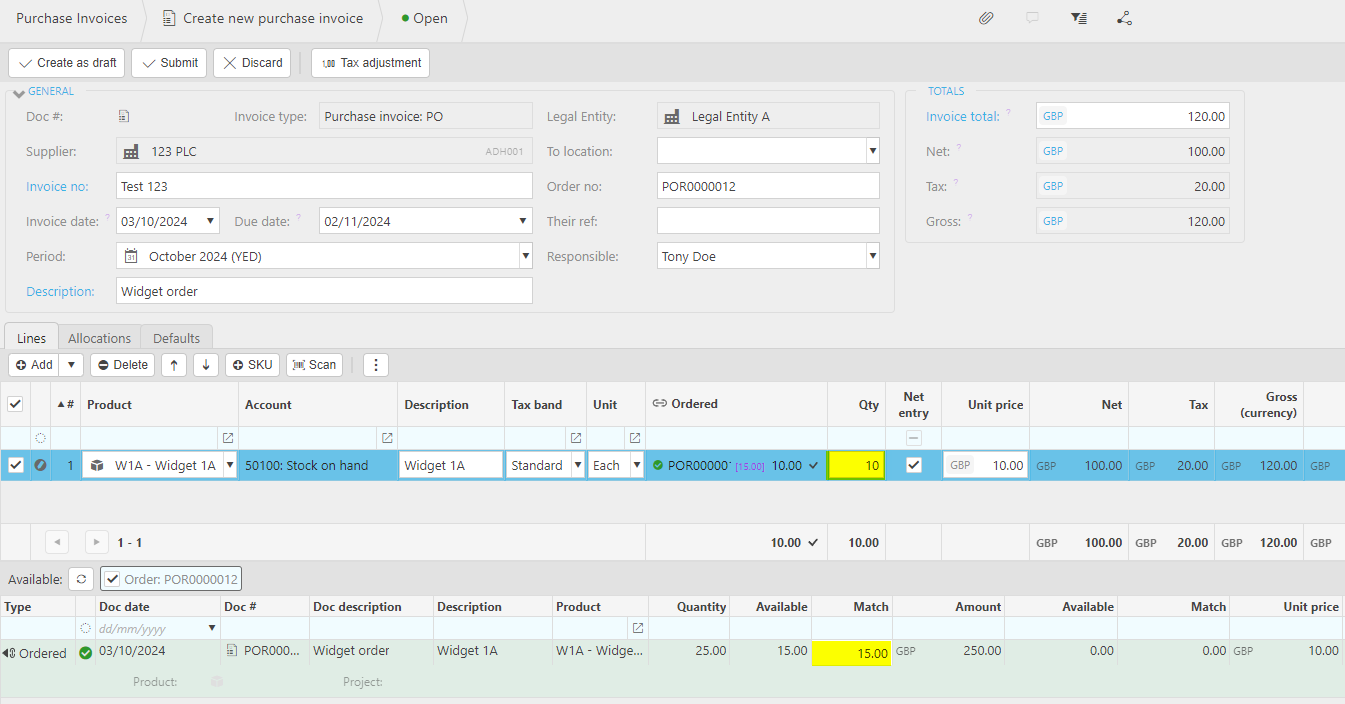
Tip
If you have only raised an Invoice for part of the Order, then on the Product line in the Ordered column there is a purple number in square brackets that shows the remaining quantity.
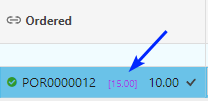
Clicking on that number allows a quick way to match the full quantity.

Similarly, for a Purchase Invoice raised on a Purchase Order based on amount e.g. for a Service, the Order number will show on the product line and no other matching will be available (blank line).
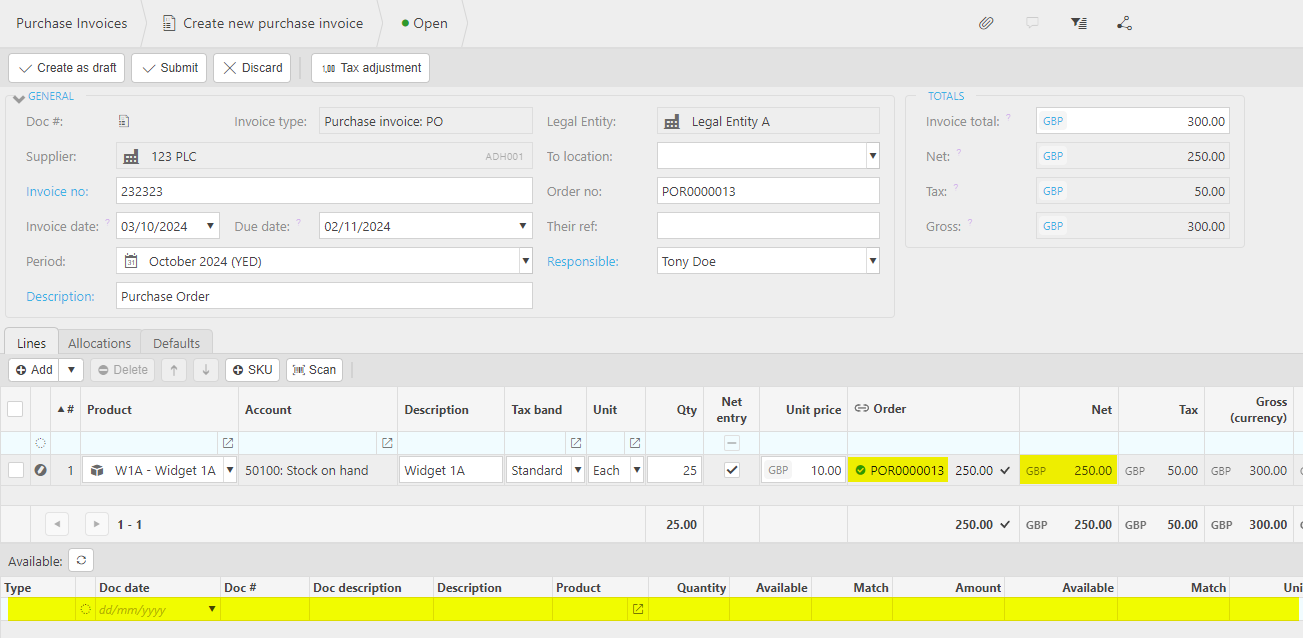
If only part of the amount is entered, then the remaining amount will show on the available line.
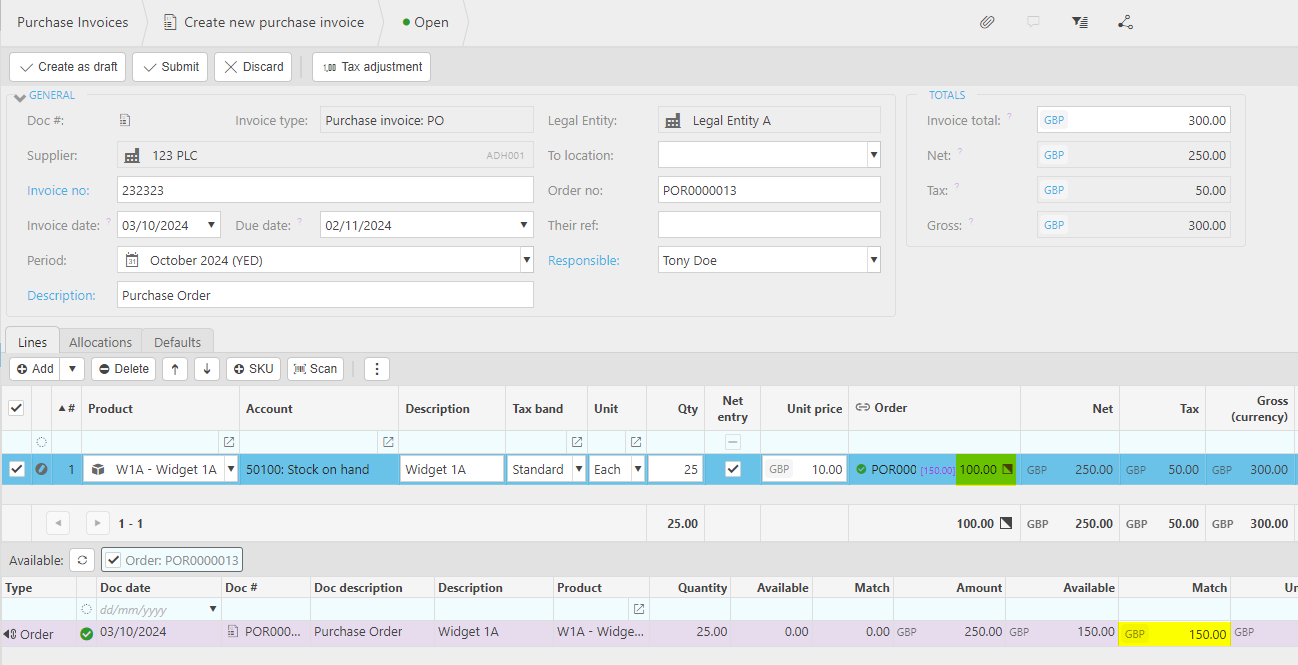
In Purchase Orders, if only part of the order has been Invoiced then the Order will appear in the Open section. If all the Order has been Invoiced, then the Order will show in the Complete section.

Even if a Purchase Order has partly been Invoiced and the rest Written off, it will be fully matched and therefore will be in the Complete section and have a Complete watermark showing.
- Adding more Amount or Quantity that is in the Available section will be possible, unless the Matching required is selected on the document options in Document types - a
 icon will appear in the Qty/Amt column to show that Matching is required.
icon will appear in the Qty/Amt column to show that Matching is required.
How to set Tolerance Levels
Tolerance levels
Note
Only non author created matching documents can be edited.
Select Document matching in the finder menu.

Select and open the Doc Type Match to add the tolerance level.
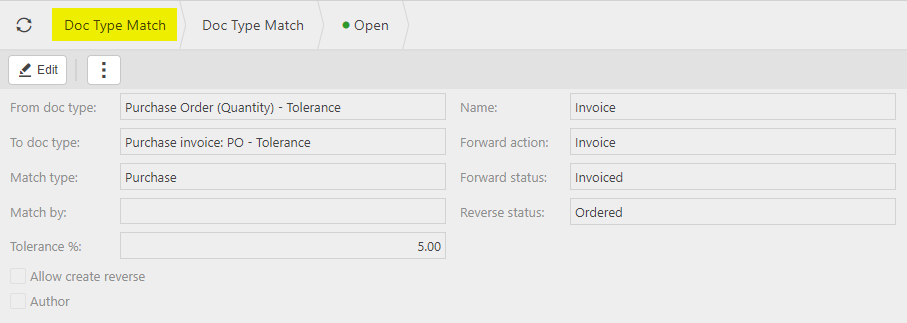
Select Edit.
Enter the Tolerance %.
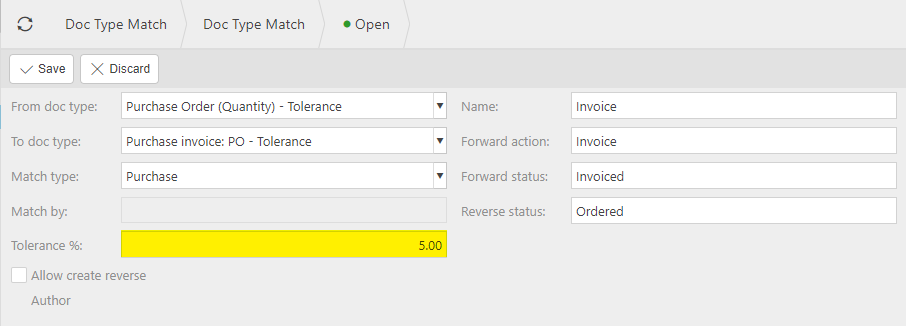
Select Save.
How to Reverse Match
Reverse Matching
This is where a Purchase Invoice or Sales Invoice is created directly from a template without knowing about a Purchase Order or Sales Order already been setup for a particular Supplier or Customer and any product is selected from available Orders.
When the Invoice is created and the Supplier or Customer is entered, then any Orders that haven't been matched for the particular Supplier or Customer will appear as Available. e.g. For a Purchase Invoice -

Selecting any of these Orders by double clicking or highlighting then adding, will move the line to the Invoice lines list and removes from the Available lines.
The new product line can now be amended if the whole Amount or Quantity is not required. Any remaining Amount or Quantity will appear again in the Available area.
Adding more Amount or Quantity that is in the Available section will be possible, unless the Matching required is selected on the document options in Document types - a
 icon will appear in the Qty/Amt column to show that Matching is required.
icon will appear in the Qty/Amt column to show that Matching is required.
To aid matching -
Compatibility highlighting:
green lines = compatible match.
purple = mismatched, but relaxed matching turned on.
orange = mismatched (without relaxed matching).
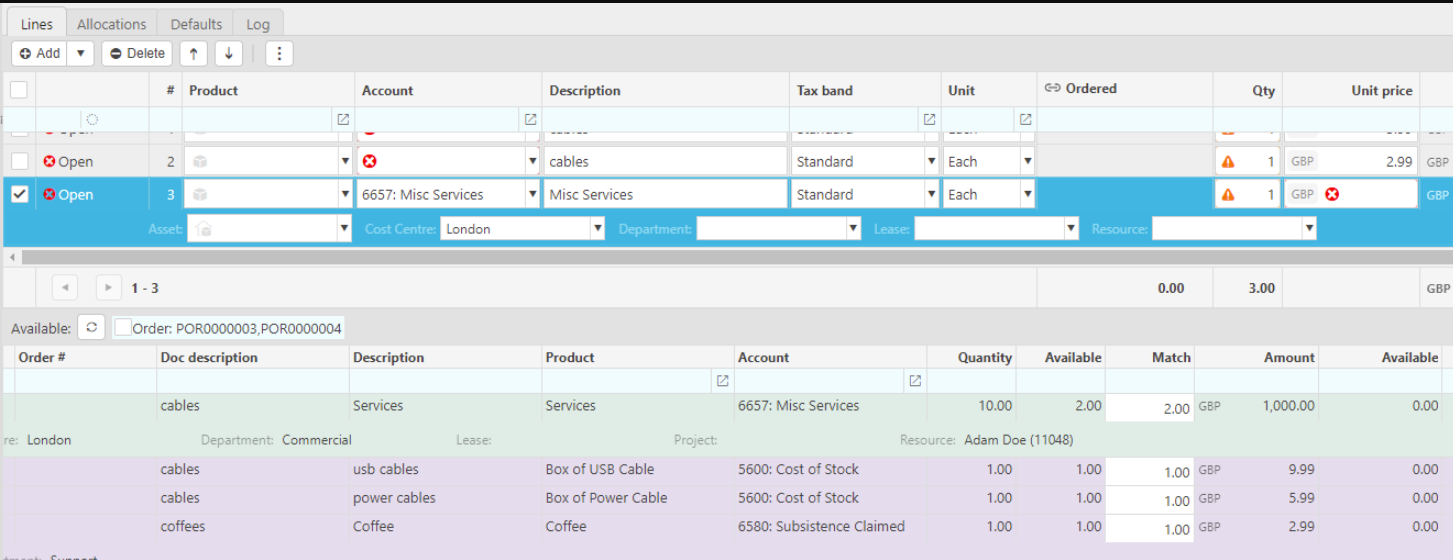
Description & unit price highlight
To help AP automation detail line matching (most likely place where unit prices and descriptions will come from) - Rows where both description and price matches are in a darker shade of green.

Icons
 - when the Invoice is fully matched
- when the Invoice is fully matched - when the Invoice is partially matched.
- when the Invoice is partially matched. - in the Qty/Amt column to show that Matching is required.
- in the Qty/Amt column to show that Matching is required.
Updated January 2025